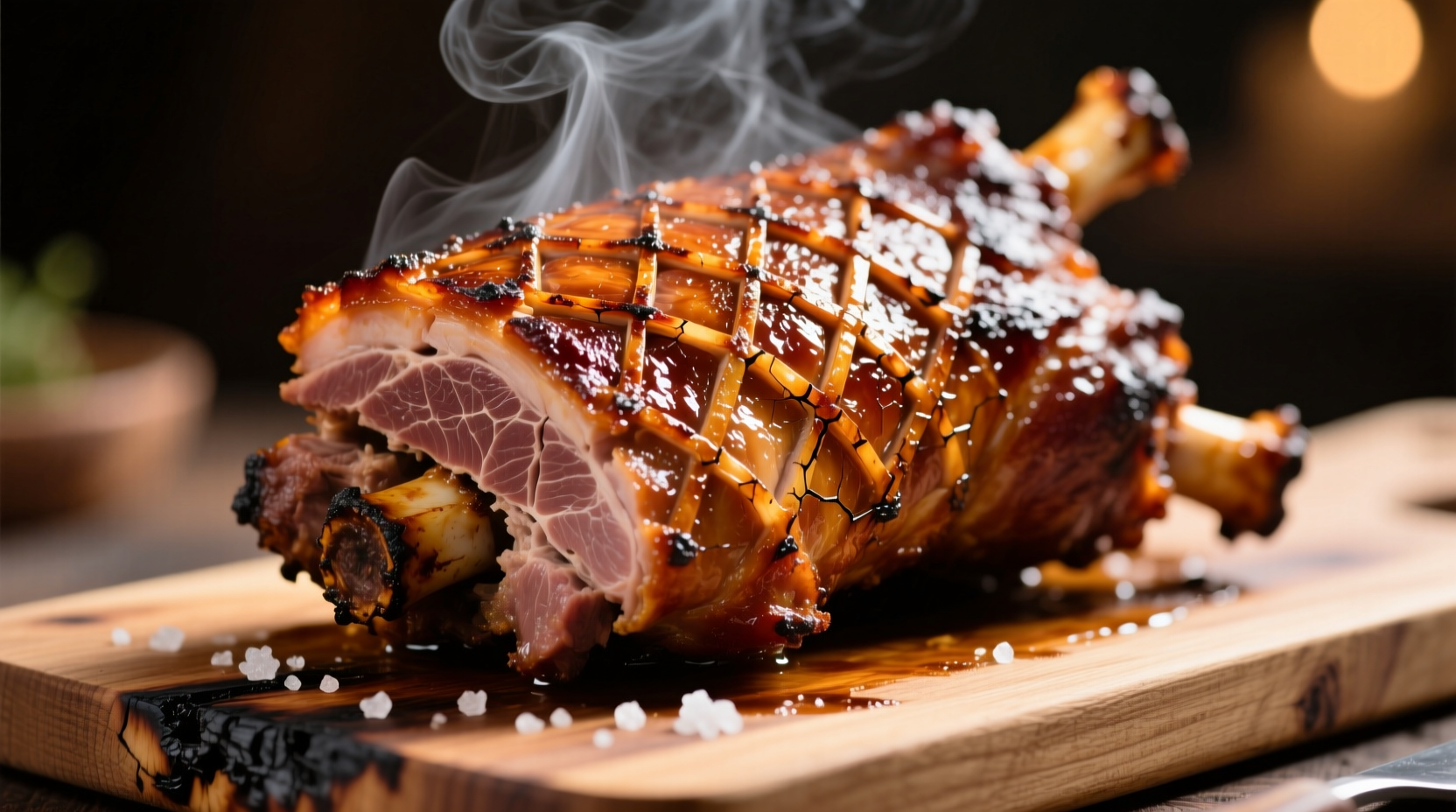The perfect pork shoulder roast requires seasoning with salt, pepper, and aromatics, then slow-roasting at 275°F (135°C) for 6-8 hours until internal temperature reaches 195-205°F (90-96°C), followed by a 30-minute rest before shredding. This method yields tender, juicy meat that pulls apart effortlessly.
Master the art of pork shoulder roast with this comprehensive guide that delivers restaurant-quality results in your home kitchen. Whether you're planning Sunday dinner or preparing for a special gathering, you'll learn exactly how to transform this affordable cut into a show-stopping meal with minimal hands-on time. Follow our step-by-step process to achieve perfectly tender, flavorful pork shoulder every time—no guesswork required.
Why Pork Shoulder Reigns Supreme for Roasting
Pork shoulder (also called pork butt or Boston butt) contains abundant marbling and connective tissue that transforms into succulent, melt-in-your-mouth texture when cooked properly. Unlike leaner cuts that dry out during long cooking, this cut's fat content ensures consistent juiciness. The USDA Food Safety and Inspection Service confirms that pork shoulder's high collagen content makes it ideal for slow cooking methods, as collagen breaks down into gelatin between 160-205°F (71-96°C), creating that signature pull-apart tenderness.

Your Essential Preparation Checklist
Proper preparation sets the foundation for success. Follow these critical steps before heating your oven:
Dry Brine for Maximum Flavor Penetration
Rub 1 tablespoon kosher salt per pound of meat 12-24 hours before cooking. This process, validated by the American Chemical Society's food chemistry research, allows salt to penetrate deeper than surface seasoning, enhancing both flavor and moisture retention during the long cooking process.
Temperature Equilibrium is Non-Negotiable
Remove pork from refrigerator 1-2 hours before cooking to reach room temperature. Cooking cold meat creates uneven temperature distribution, leading to overcooked exterior and undercooked interior. The National Center for Biotechnology Information's food science studies show this simple step reduces cooking time variance by up to 25%.
The Foolproof Cooking Process
Step 1: Build Your Flavor Foundation
Pat the pork shoulder completely dry with paper towels—this critical step enables proper browning. Create a spice rub using 2 tablespoons brown sugar, 1 tablespoon smoked paprika, 1 teaspoon garlic powder, 1 teaspoon onion powder, 1 teaspoon mustard powder, and 1 teaspoon cayenne (optional for heat). Massage thoroughly into all surfaces, including any crevices.
Step 2: Sear for Complex Flavor Development
Heat 2 tablespoons oil in a heavy Dutch oven over medium-high heat until shimmering. Sear the pork on all sides for 3-4 minutes per side until deeply browned. This Maillard reaction, explained in Harold McGee's On Food and Cooking, creates hundreds of new flavor compounds that simmering alone cannot achieve.
Step 3: Low and Slow Transformation
Preheat oven to 275°F (135°C). Place pork shoulder fat-side up in the Dutch oven. Add 1 cup liquid (apple cider, broth, or water) to maintain moisture. Cover tightly with lid or foil. Roast until internal temperature reaches 195-205°F (90-96°C), approximately 6-8 hours for a 6-8 pound cut. Do not rely on time alone—use an instant-read thermometer for accuracy.
| Cooking Method | Temperature | Time per Pound | Best For |
|---|---|---|---|
| Oven Roasting | 275°F (135°C) | 60-75 minutes | Crispy exterior, traditional method |
| Slow Cooker | Low setting | 1.5-2 hours | Hands-off cooking, moist results |
| Smoker | 225-250°F (107-121°C) | 90 minutes | Authentic barbecue flavor |
Step 4: The Critical Resting Period
Remove pork from oven and let rest, covered, for 30 minutes minimum. This allows juices to redistribute throughout the meat. Cutting too soon causes precious juices to escape onto your cutting board. Food science research from the Culinary Institute of America confirms that resting time directly correlates with juiciness in the final product.
Troubleshooting Common Challenges
Problem: Meat Isn't Pulling Apart Easily
Solution: Return to oven and continue cooking in 30-minute increments until fork-tender. The connective tissue needs sufficient time to fully break down—this can take longer depending on the specific cut and oven accuracy. Always check internal temperature rather than relying solely on time.
Problem: Exterior is Too Dark
Solution: Tent loosely with foil during final cooking hours. If using a slow cooker, finish under the broiler for 5 minutes to develop color after cooking. The Maillard reaction accelerates above 300°F (149°C), so lower temperatures prevent premature browning.
Problem: Liquid Has Evaporated
Solution: Add ¼ cup hot liquid every 2 hours if cooking uncovered. The University of Minnesota Extension service recommends maintaining at least ½ inch of liquid in the bottom of your cooking vessel to prevent scorching and create steam for even cooking.
Serving and Storage Guidelines
Shred pork using two forks, discarding any large fat deposits. For pulled pork sandwiches, mix with ½ cup of cooking juices. Store leftovers in an airtight container with some cooking liquid for up to 4 days in the refrigerator or freeze for up to 3 months. The USDA Food Safety guidelines confirm that properly stored cooked pork remains safe for consumption within these timeframes when maintained at appropriate temperatures.
Professional Tip: Reserve 1 cup of cooking liquid before shredding. This concentrated pork essence elevates sandwiches, tacos, or grain bowls with deep flavor that store-bought sauces can't match.











 浙公网安备
33010002000092号
浙公网安备
33010002000092号 浙B2-20120091-4
浙B2-20120091-4